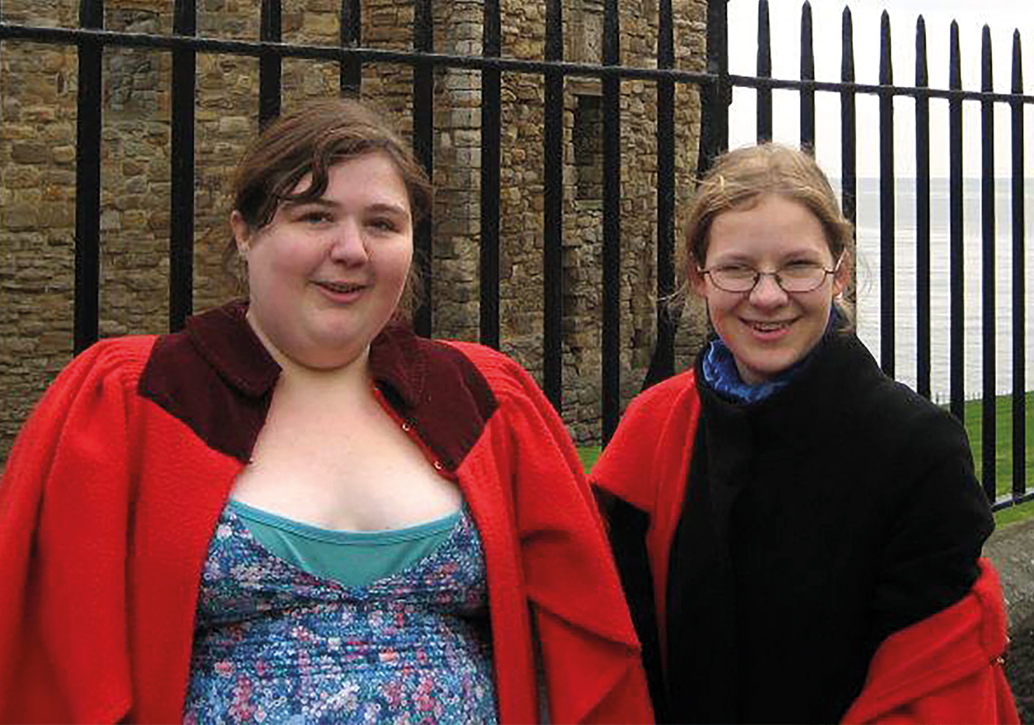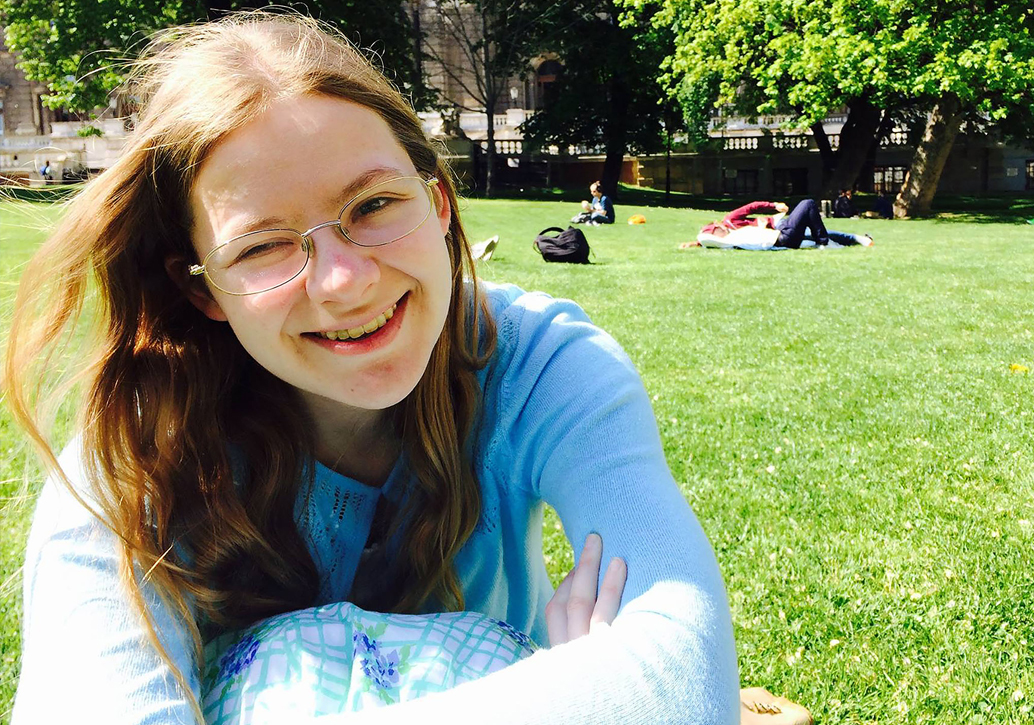By Claire Steep
I wasn’t supposed to go to Scotland. I was partially sighted and it was damp, dreich and inhospitable to outsiders—or so I was told. But stranger pairs have made friends before now, which goes some way to explaining why, in May 2009, I alighted a train in the middle of nowhere and arrived home.
I was standing at Leuchars rail station, about to travel to what St Regulus once mistook for the end of the world, to start a degree at St Andrews university. That’s the myth: Told by God to deliver the bones of St Andrew to the end of the world, St Regulus took them to St Andrews, presumably too demoralized by winter to consider travelling any further north. And whatever else it might be, St Andrews is undeniably grey, which makes it difficult to explain when asked (as I often have been since returning to Canada) why I loved it as I did.
There is no good, eloquent way of summing up eight years in a place. St Andrews was home to me for many reasons. I loved being by the sea—the smell, the sound and the cold shock of it as I walked along the coast on a summer’s afternoon. That was part of it. I thrived among fellow tea drinkers, many of them members of the Terminally Undemonstrative Club along with me—that was another part. And while it was by no means the only thing to stand out, I loved how easily accessible it was, end of the world or not.
It struck me before I’d even left that train, how much more visible I was as a partially sighted person. Having enough vision not to need to be led by the elbow to my seat, I politely declined the guard’s offer. But the fact that this could happen, if I were having a bad vision day or if the print on my ticket was too small to see, was a revelation.
It wasn’t only the train guard either. All the pedestrian crossings talked to me. Since half the time the little green man stands out of my field of vision, this was a welcome concession. However, it wasn’t until I’d lived in Scotland for some years and happened to be visiting a friend in Oxford that I became aware of the companion to the audio cue—a little device by the highly technical name of the “spinning cone.”
In a spin
Oxford Ring Road, summer. Cyclists were out in force and we stood at the crosswalk, two partially sighted women, three rows deep in tourists, the streetlight a far-off thing we only dreamed of seeing. I’d already decided we would take our cue from the crowd around us about how and when to cross the road when my friend introduced me to the spinning cone. Perhaps the size of my thumb, it’s located on the underside of the button one presses to cross the road, and was designed as an aide to the blind–deaf. At the Oxford Ring Road, with cars racing and tourists chatting, we found it invaluable to the partially sighted, too.
The spinning cone is also all but invisible to the uninitiated. It is possible to take a thing so for granted that it’s only in its absence that the measure of its value emerges. In Scotland, for instance, I frequented a café that was fluent in leaf tea. When I ordered a cup of “Black tea, please,” they reeled off names: Darjeeling, Assam, English Rose… The list was vast. Returning to Canada, I found that asking for a pot of black tea was met with well-intentioned bemusement. “Not to worry,” I’d be told, “milk always comes on the side.”
The spinning cone at stoplights was like that. It spoke my particular language in the same way British cafés did when I ordered black tea. Almost a decorative afterthought by the stoplight, it was there when neither audio nor visual cues were enough; an option if I needed it. In Toronto, however, as I scrabble for the spinning cone that isn’t there, I’m met by that same bemused goodwill I find when I unthinkingly ask for black tea. It’s as if the country has politely and perplexedly said, “Not to worry, all our lights change colour.” They do, and some of them even talk to me the way British lights do. But Toronto roads are wider and busier than Scottish roads, and I often find myself squinting into the sunlight, unable to decide if the green man, rendered white by Canadians, is in evidence.
Of course, I can and do take cues from the people around me. But sometimes they’re impatient with a long light and cross prematurely, or bolt across the road just as the light changes. Because I judge cars not as a sighted person would by their distance from me, but by how far they sound from me, neither of those options are ones I want to take.
 Being independent
Being independent
In Scotland, I was independent. I travelled alone, I lived alone and I somehow, despite not having a line of centre, found myself in a branch of the Scottish Episcopal church so high as to have its own choreography. I should never have negotiated my way through the processions and the recessions, the kneeling and the censing successfully. It flew in the face of everything I could see, and yet when our bishop turned up, confused by the synchronized ceremony of it all, I could lead him through the fine details as well as anyone.
It’s hard to return from that kind of independence to the kindness of strangers, even if it’s only briefly as I cross the road. Especially then, in fact. Having slayed dragons, it seems risible to be defeated by hard-to-see traffic lights. And so, as I scrabble for that invaluable spinning cone and find it missing, I experience my own polite perplexity; how does the end of the world—albeit according to St Regulus—provide more accessible traffic crossings than Toronto? And how is it that a country that is reputedly so reserved and home to my tribe, the Terminally Undemonstrative, was better at meeting my needs? Surely it wasn’t that they talked about these things more?
Many accommodations
What does seem to be true is that Britain has implicitly understood the spectrum of partial sight and gone out of its way to accommodate it. Enter the spinning cone, talkative lights, tactile pavements and highlighter tape on stairs. The thing that took me to that Leuchars platform and toe-to-toe with the end of the world in the first place was a desire to read English. As someone with a right-field hemianopia and, therefore, no more able to see on my right than sighted people can out of the back of their heads, that should have been unthinkable. It was unthinkable to the teacher who prophesied I would never progress past listening to audiobooks. But there I was, in May 2009 and with no knowledge of Scotland’s saints as yet, with a sense that I had come home and that to read English in a place so alive with history would bring books to life as nothing else had. That history proved the crux of it, I think; Canada shuffled gently out of dominionhood and the sun ever shone on England, but Scotland’s history was writ large in adversity, in doing the unthinkable thing. Little wonder then that we should look at each other, it and I, and recognize a friend.
Claire Steep read English at St Andrews University, Scotland, for 5 years. She blogs about books and music at choristerathome.com, and is currently a communications intern for Abilities.
________________________________________________________________________________________________
Tips for talking to the partially sighted…
1. If you want to help at a crosswalk or anywhere, do ask. We’re great advocates and won’t mind telling you what we need.
2. Please don’t grab our elbows unsolicited. If you tried that on a horse it would spook. Generally speaking, so will we.
3. Avoid asking our companions what we can see. They don’t always know and find it as uncomfortable as us.
4. We can’t read braille. It takes time and effort to learn, consider having material available in large print instead.














